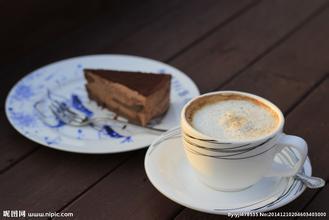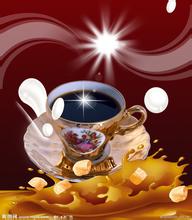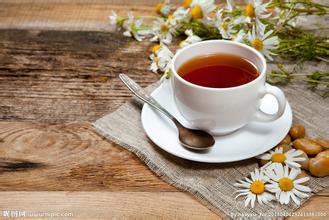Coffee fans must know the common sense of coffee
Coffee etiquette
Coffee that is drunk after a meal is generally served in a pocket cup. The ears of this cup are too small for fingers to pass through. But even if you use a larger glass, don't put your finger through the ear before holding it. The correct way to hold a coffee cup should be to pinch the cup handle with your thumb and index finger and then lift the cup.
[How to add sugar to coffee] When adding sugar to coffee, sugar can be scooped up with coffee spoon and added directly to the cup; you can also use sugar clamp to clamp the sugar cube on the close side of the coffee dish, and then use coffee spoon to add sugar cube to the cup. If you put sugar directly into the cup with a sugar clamp or hand, sometimes coffee may spill, thus soiling clothes or tablecloth.
Coffee spoon is specially used to stir coffee, coffee should be taken out. No more spoonfuls of coffee to drink slowly, and don't use coffee spoons to mash sugar cubes in your cup.
Just brewed coffee is too hot, you can use a coffee spoon in the cup gently stir to cool it, or wait for it to cool naturally, and then drink. Trying to blow coffee cold with your mouth is a very rude gesture.
[Use of cups and saucers] The cups and saucers that hold coffee are specially made. They should be placed on the front or right side of the drinker, and the ears should point to the right. When drinking coffee, you can hold the cup ear of coffee with your right hand, gently hold the coffee dish with your left hand, and slowly move to your mouth to sip. It is not advisable to hold the cup full, swallow it, or bow down to the coffee cup. Don't make any noise while drinking coffee. When adding coffee, do not lift the coffee cup from the coffee dish.
[Coffee and snacks] Sometimes you can eat some snacks when you drink coffee, but don't hold a coffee cup in one hand and a snack in the other hand. Eat and drink alternately. Coffee should be put down for snacks, and coffee cups should be put down for snacks.
Coffee fans must know coffee common sense
Common English words for coffee shops
Flavor is the overall impression of aroma, acidity, bitterness, sweetness and alcohol, which can be used to describe the overall feeling of contrast coffee.
Acidity [acidity] is the sour, strong quality of all coffee grown in the plateau. The sour acrid is different from bitter or sour, and it has nothing to do with pH value, but it is a fresh and lively quality that promotes coffee to exert functions such as boosting the mind and cleansing the taste.
Body [alcohol] is the taste of coffee left on the tongue after drinking the finished coffee. Alcoholicity varies from light to light, medium, high, fatty, and even syrupy in some Indonesian coffees.
Aroma refers to the aroma and aroma emitted by coffee after conditioning. Bouquet is a less commonly used word for the taste of ground coffee. Aroma is usually specific and comprehensive. Words used to describe Aroma include: caramel, charred, chocolate, fruity, grassy, malty, rich, rich, spicy, etc.
Bitterness is a basic taste, and the sensory area is distributed in the root of the tongue. The bitterness of dark roasts is deliberately created, but the most common cause of bitterness is too much coffee powder and too little water. Bitterness is not the assent word for sour.
Bland Coffee grown in lowlands and usually quite light and tasteless. Coffee with too little powder and too much water will also have the same light effect.
Briny [salty] coffee brewing, if overheated, will produce a salty taste. Some coffee shops have coffee that tastes like this.
Coffee fans must know coffee common sense
Barista [Barista]
Barista (Barista) professional definition: engaged in coffee mixing, preparation and service of workers. Mainly engaged? Work content, including: (1) basic identification of coffee beans, according to the characteristics of coffee beans to mix different flavors of coffee;(2) the use of coffee equipment, coffee utensils to make coffee;(3) to provide coffee service for customers;(4) spread coffee culture.
Espresso
Espresso coffee is brewed from our roasted espresso beans. Espresso coffee is usually served in a small coffee cup and is often used to blend other unique coffee drinks.
Shot [one espresso]
One one ounce espresso. Each standard espresso consists of three components: crema, body and heart. Gold foam refers to the caramel-colored foam on the surface of espresso coffee, which disappears a few seconds after the espresso is brewed.
Single [Espresso]
A serving [about an ounce] of espresso extracted from an espresso machine and usually drunk alone or with steam-steamed hot milk. Most small and medium drinks contain an espresso.
Double.
Two single espressos are standard with large drinks, and if you want your medium coffee stronger, ask the waiter for an extra espresso.
Espresso Con Pana
Espresso topped with whipped cream.
Espresso Macchiato [Concentrated Macchiato]
Espresso is marked with soft foam.
Caffe Latte
A smooth-tasting drink made in three stages: a fresh espresso, topped with hot milk, and then topped with a fine layer of foam to create a pleasant surprise. Latte Macchiato is made in much the same way as Latte Macchiato, except that the macchiato must be made with milk and coffee "marked" to make it smoother.
Coffee fans must know coffee common sense
Caffe Mocha
A classic combination of rich espresso and high quality chocolate blended with fresh hot milk topped with creamy whipped cream.
Cappuccino
A typical Italian breakfast drink with less milk and more foam than Latte. In general,"dry" refers to cappuccino with more milk, while "wet" refers to cappuccino with more milk.
Americano
Espresso combines with hot water to create a full-flavored beverage with a deep espresso taste.
Short [Cup]
In Starbucks, Short refers to an 8-ounce drink best served after dinner.
All [Medium Cup]
Tall refers to a 12-ounce drink, which is the most ordered Size.
Grande
Grande refers to a 16-ounce drink, and when you want to treat yourself to something nice, a large is your best bet.
ow-fat
For a more affordable alternative, make your own low-fat coffee with low-fat milk.
No foam
Don't you like coffee foam on your nose? You can tell the server you don't want foam, so you'll only get espresso combined with hot milk.
Dry [with more milk bubbles]
If you prefer a cappuccino filled with dense, sweet foam, you can tell the waiter what you want.
With room
I'd like to add some milk to my Americano or single-serve coffee. Please make room for me.
Whip [Cream]
Short for Whipped cream. If you want to reduce the calories in your mocha coffee, tell the waiter: "I don't want whipped cream" nowhip.
Coffee fans must know coffee common sense
Drinking freshly ground coffee is obviously more beneficial to the human body than loving carbonated drinks or fruity drinks with high sugar content. Coffee can definitely be regarded as a favorite tonic for office workers. It feels great to have a cup before work or when you feel tired due to stress. But you have to know that everything has two sides, even if a food or drink overall attributes tend to be positive also can not rely too much, if you are also a senior to unable to extricate yourself coffee control, then the following five things you must know.
Coffee on an empty stomach can also be drunk.
It's not just alcohol, coffee can also make you drunk. Any doctor or nutritionist does not recommend drinking coffee on an empty stomach because the stomach mucosa absorbs caffeine very quickly on an empty stomach. As high concentrations of caffeine enter the blood, the heart and nervous system will be stimulated, resulting in dizziness, palpitation, chest distress, shortness of breath, night sweats and a series of reactions. Therefore, it is best to have some small desserts when drinking coffee to reduce the absorption of caffeine by the stomach.
2. Drinking coffee before exercise can improve fat loss effect
Studies show that drinking coffee before exercise boosts metabolism and fat burning more than exercising without drinking anything. This is because when caffeine in coffee is absorbed into the bloodstream by the gastric mucosa, the body will make a stress response, the fatty acid concentration in the blood will rise rapidly, and the free fat that is difficult to metabolize in the body will be consumed during exercise.
Drinking coffee every day is good for your health.
For sedentary office workers, drinking some coffee every day is definitely very beneficial for health. Caffeine and polyphenols in coffee can increase the concentration of nitrogen oxides in the body, stimulate vasoconstriction and dilation, keep blood vessels elastic, prevent thrombosis, and maintain the health of cardiovascular and cerebrovascular systems.
Coffee is best served in the morning.
After caffeine enters the body, it takes more than 7 hours to be completely metabolized, and the main role of caffeine is to accelerate lymphatic metabolism, stimulate the central nervous system, and fight sleepiness, so if the quality of sleep is relatively poor, or you want to go to sleep early, it is best to put coffee in the morning to avoid affecting sleep quality. Of course, if you really like the mellow smell of coffee, you can choose some low-coffee or non-coffee coffee drinks as a seasoning.
5. Drinking about 300ml of coffee a day is the healthiest
Even if there are many benefits, never drink too much coffee. Generally speaking, the amount of coffee you drink every day should not exceed 350ml, and it is best to maintain it at around 300ml. Drinking this amount of coffee drink not only prevents health and skin problems caused by excessive caffeine intake, but also supplements sufficient antioxidant polyphenols to combat free radicals on the body and skin, beauty and health.

Important Notice :
前街咖啡 FrontStreet Coffee has moved to new addredd:
FrontStreet Coffee Address: 315,Donghua East Road,GuangZhou
Tel:020 38364473
- Prev

Nine factors of coffee taste influenced by common sense of coffee
Women who drank more than three cups of caffeinated coffee a day had a 21% lower risk of basal cell cancer than those who drank less than one cup a month. Drinking coffee can help people with heavy drinking, overweight, diabetes or iron overload reduce the risk of liver disease, but there is no evidence that coffee and tea can reduce the risk of chronic liver disease from fatty liver or viral hepatitis. Coffee tastes unique and delicious. Copy that.
- Next

18 pieces of cold knowledge about coffee
A cup of coffee will lose 70% of its flavor in 2 minutes, and the following knowledge is definitely enough for you to hold your eyebrows for 2 minutes. Coffee is one of the most popular drinks in the world. Although it is very popular, many people don't know it very well. Now let's reveal the 19 secrets behind the coffee. After reading it, you will know that the coffee comes from
Related
- Beginners will see the "Coffee pull flower" guide!
- What is the difference between ice blog purified milk and ordinary milk coffee?
- Why is the Philippines the largest producer of crops in Liberia?
- For coffee extraction, should the fine powder be retained?
- How does extracted espresso fill pressed powder? How much strength does it take to press the powder?
- How to make jasmine cold extract coffee? Is the jasmine + latte good?
- Will this little toy really make the coffee taste better? How does Lily Drip affect coffee extraction?
- Will the action of slapping the filter cup also affect coffee extraction?
- What's the difference between powder-to-water ratio and powder-to-liquid ratio?
- What is the Ethiopian local species? What does it have to do with Heirloom native species?

